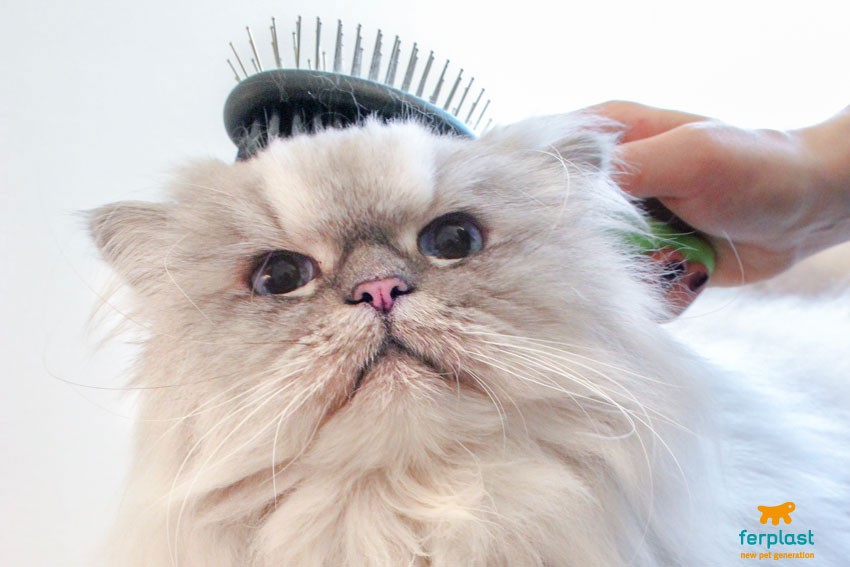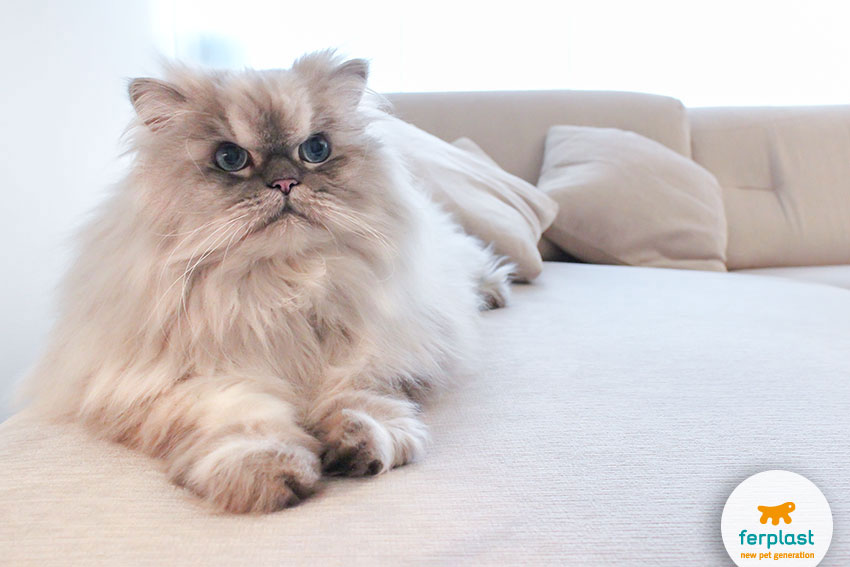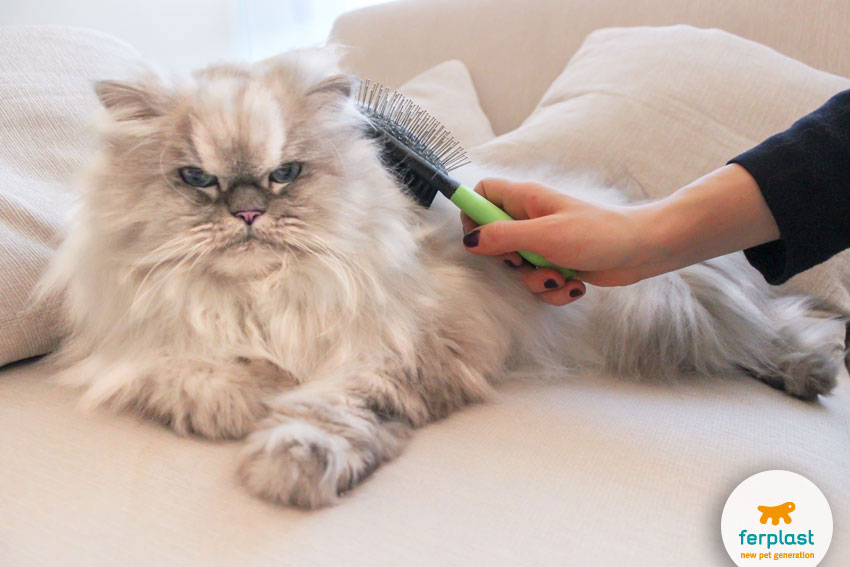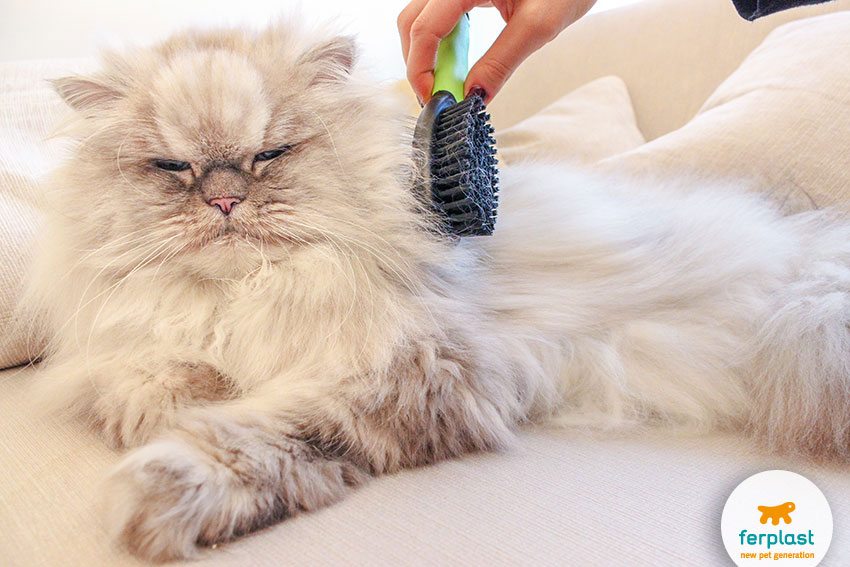Cats are very clean animals, which means that swallowing fur while grooming is normal, sometimes in large amounts. It can become a problem, and you’ll notice when this happens because your cat will start throwing up hairballs.
A cat’s tongue is rough and covered with hard hook-shaped papillae. It’s a formidable cleaning tool: its particular structure helps cats “brush” their own coat, cleaning it and getting rid of dead fur. In certain conditions, fur ingestion can be excessive, which manifests itself with the frequent regurgitation of hairballs.
This may be a recurrent issue, but it can also worsen during moulting periods, such as spring and autumn. In these seasons, the amount of dead fur the cat ingests may be twice the usual, and the excessive fur in the digestive track cannot be eliminated in the stools. This leads to the formation of hairballs, also called trichobezoars, which are then thrown up. These hairballs, if not regurgitated, can also lead to more serious problems, such as constipation or bowel obstruction.
As can be expected, the cats that are most at risk are those with medium, semi-long and long fur, but not necessarily so. Changing seasons are not the only cause of hairballs: the problem may worsen whenever cleaning and grooming sessions become more frequent. For instance, overgrooming can take place when there’s a flea infestation, a skin condition that causes itching, or any wound that causes your cat to lick himself continuously.
Cats that live in a flat or in a house can be more susceptible to it. As they’re exposed to less stimuli and have less activities to do, they end up licking themselves more often. To make things worse, as they’re not allowed outside, they can’t eat grass, which would stimulate bowel movements and help eliminate fur with the stools. Stress is another factor that may increase grooming frequency, as licking themselves is an anti-stress tool for cats.
If your cat has been throwing up hairballs very frequently, coughs often and is constipated, seems depressed and his fur looks ugly, don’t rule out a gastrointestinal condition. In this case, before you do anything about it, talk to your cat’s veterinarian for all the necessary exams. If that is not the case, there are ways you can use to help your cat reduce and prevent the regurgitation of hairballs (of course, if you can tell your cat is stressed, you should look for a way to help him de-stress).
These tips apply from the dietary point of view, to stimulate bowel motility, as well as from the practical side, by limiting the amount of fur ingested. Let’s have a look:
- If possible, change your cat’s diet. Give her cat food especially formulated to help with intestinal motility. Look for “hairball” on the label;
- Give your cat less food in more frequent meals, to stimulate intestinal peristalsis (muscle contraction) and facilitate fur elimination;
- Give her larger food bites;
- Supplement your cat’s diet with gastrointestinal lubricants, such as flavoured pastes sold in tubes or specific drugs, only after talking to your cat’s veterinarian;
- If your cat lives in a flat, give her a pot of catnip;
- Keep an eye on your cat’s grooming, which should take place every day in critical periods, such as change of seasons, and for cats with long fur.
To make things easier during grooming, make sure your cat gets used to being brushed and combed since she’s a little kitten. Start with the least bothersome areas, sweet-talking her and cuddling her at the same time, and then concentrate on critical spots, such as belly and lumbar spine. If your cat is particular intolerant to this kind of contact, you can start with a rubber glove before you dive into the world of combs and brushes: the glove will be interpreted as a caress, making it easier to tolerate. Of course, after each peaceful session, give her a treat! It will be very welcome.
Keep in mind: the more dead fur you remove, the less of it your cat will end up swallowing!




